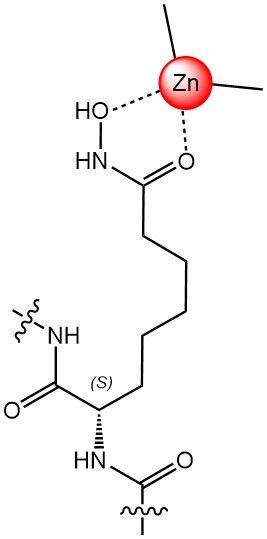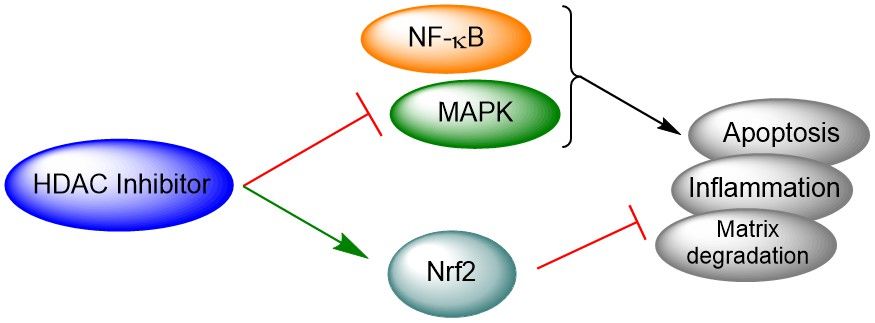Welcome to Iris Biotech
For better service please confirm your country and language we detected.

For better service please confirm your country and language we detected.

Thank you very much for your interest in our products. All prices listed on our website are ex-works, Germany, and may attract customs duties when imported.
You may/will be contacted by the shipping company for additional documentation that may be required by the US Customs for clearance.
We offer you the convenience of buying through a local partner, Peptide Solutions LLC who can import the shipment as well as prepay the customs duties and brokerage on your behalf and provide the convenience of a domestic sale.
Continue to Iris Biotech GmbHSend request to US distributorPublished on 09.09.2020

Epigenetics is a crucial element of the regulation of gene expression in all eukaryotes. One aspect of epigenetic regulation is the control of the acylation state of lysine residues in histone tails. Acetylated histones are generally associated with transcriptionally active chromatin, while deacetylation of histones results in DNA condensation and suppression of DNA transcription. The acetylation state of histones and thus the condensation state of DNA is tightly controlled by the opposing actions of two different classes of enzymes, namely histone deacetylases (HDACs) and histone acetyltransferases (HATs).
Considering the importance of protein acetylation in the regulation of gene expression, it follows that abnormalities in histone acetylation are associated with the development of cancer and other diseases. Frequently observed abnormalities in human cancer are a global loss of acetylation at lysine 16 and trimethylation at lysine 20 of histone H4. Directly connected with these aberrations is an abnormal expression and dysregulation of HDACs in multiple human cancers. Additionally, HDACs are known to deacetylate various non-histone cellular targets that are involved in a large variety of biological processes such as cell cycle regulation, DNA-damage response, apoptosis, autophagy, angiogenesis, and metastasis. Consequently, alterations in HDAC function are connected to various diseases such as neurological disorders, muscular dystrophy, cardiac hypertrophy, and HIV infection.

Effects of HDAC inhibitors: HDACis inhibit the activation of NF-κB and MAPK (ERK1/2, JNK, p38MAPK); HDAC inhibitors also activate transcription factor Nrf2 which is known to inhibit inflammation and matrix degradation.
Inhibitors of HDAC enzymes (HDACi) are therefore a promising class of compounds for the treatment of cancer and other diseases, as well as for the investigation of HDAC function and mechanism of action. By effecting hyperacetylation of histone and non-histone targets, HDACis may facilitate the restoration of cellular acetylation homeostasis, and thus halt cancer progression and reactivate the expression of tumor suppressors.
Mammalian cells contain 18 HDAC enzymes that can be sub-divided into four main classes: class-I (HDAC1, 2, 3 and 8), class-II (HDAC4, 5, 6, 7, 9, 10), class-III (sirtuins 1–7) and class-IV (HDAC11). Inhibitors of classical HDACs (classes I, II and IV) operate by binding to the active site catalytic Zn2+ion. Based on their chemical structures, HDAC inhibitors can be classified into four groups: peptides, hydroxamates, benzamides, short-chain fatty acids.

Coordination of HDAC active site zinc by hydroxamate-bearing amino acid side chain.
As shown by Jamieson et al., peptide HDACis constitute an interesting class of inhibitors since they combine the potentially high selectivity of peptides with the possibility to incorporate non-natural amino acids able to coordinate the HDAC active site zinc(II). Such amino acids with chelating properties can be obtained by the suitable placement of functional groups with donor properties within their side chain, such as amino, carbonyl, oxyamino or hydroxyl groups. Traditionally, the synthesis of peptide HDACis requires laborious multistep syntheses.
In collaboration with the Jamieson group (University of Glasgow), Iris Biotech now offers a series of Fmoc-amino acid building blocks that bear functional groups with donor properties in their side chains. Those building blocks are compatible with standard Fmoc/tBu SPPS protocols and represent ready to use efficient tools for the fine-tuning of the chelating properties of peptides, enabling easy access to peptide-based HDACis.
➔ Do you require a different amino acid derivative? Simply contact our Custom Synthesis Service.
References: